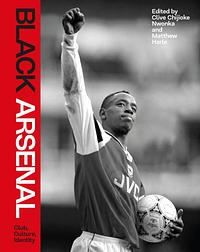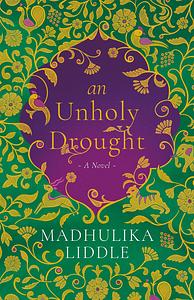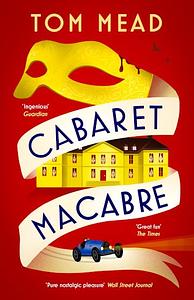Take a photo of a barcode or cover
robinwalter's Reviews (1.87k)
challenging
informative
reflective
medium-paced
In the preface to black Arsenal the purpose and intent of the book is summed up in these words:
Black Arsenal is an exploration, rather than a celebration, of Arsenal and Black culture. It does not claim that Arsenal has a model relationship to Black identity, nor is it an exhaustive list of all things Black and Arsenal. Instead, Black Arsenal has been an attempt to represent and reflect upon the breadth of a delicate and complex cultural experience that has come to play a role in defining both a football club and contemporary Black identity.
I'm giving this book 5/5 because for this non-black and very distant Arsenal fan, It delivered on that statement of purpose.
The whole book was marked by careful consideration and nuanced differentiation of many different aspects of the Arsenal experience from different black perspectives. Since my own personal affection for and affiliation to Arsenal has always been primarily intellectual and cultural, this really resonated with me.
Having never been a "my club - my club right or wrong but always my club" kind of Arsenal fan there was a significant disconnect for me during the Usmanov years. When I returned as a more active supporter , it was with a cynical acceptance of the commercial, corporate and capitalist imperatives that drive every successful football club in this era. I can't help being suspicious of community outreach initiatives, cultural awareness campaigns, and merchandising and promotional activities that seem to promote a celebration of cultural diversity and especially of Arsenal's ties to its black fan base but that also smell like moneymaking opportunities.
Which is exactly why this book is so remarkable. Through Dr Nwonka's analyses and through personal perspectives and experiences, the book highlights how these sorts of initiatives can be both commercially lucrative and culturally enriching, strengthening community identity even if primarily intended to bolster the bottom line. It was fascinating and enlightening to read of various ways in which such corporate initiatives often strengthen the sense of black Arsenal despite seeming like little more than attempts to milk a cash cow. A phrase that really resonated in this regard was toward the end of the book where Dr Nwonka is quoted as speaking of "the site of resistance to assimilation into the capitalist logics’ of Arsenal Football Club."
It's that level of nuance and critical awareness that makes this a very special book. Before I even started it I was reassured by learning that Dr Nwonka is NOT an Arsenal fan or supporter as I hoped that would add some objectivity. I was not disappointed. It doesn't shy away from any of the uncomfortable elements of Arsenal's relationship with its black fan base community. From the excruciatingly white women's team (playing and non-playing staff) to the widely divergent views on the merits or lack thereof of AFTV, this book lives up to its promise to be an exploration and not a celebration.
It was a love of reading that first prompted my connection with the Arsenal, and several of my favourite authors have been famously vocal Gooners, from Douglas Adams to Nick Hornby, among others. The number one reason I was most excited to buy and read this book was that it was written by someone who is not an Arsenal fan. That led me to hope for more than hagiography, and my hope was realised. I now understand my club better than I did before, and I am proud of its community. Thank you Dr Nwonka. Victoria Concordia Crescit.
emotional
informative
medium-paced
Plot or Character Driven:
Character
Strong character development:
Complicated
Loveable characters:
N/A
Diverse cast of characters:
Yes
Flaws of characters a main focus:
Complicated
The second book in the Delhi Quartet series this was a big read. A lot of action-packed history brought down to size by personalising it through the medium of a family chronicle.
What I really loved about this book was its authenticity. A very clear-eyed view of the reality of life in an age before modern medicine, when the frailty and uncertainty of life was starkly obvious, especially for the poor. At the same time, the author wove a story that was often very entertaining as well - elements that reminded me of The Count of Monte Cristo combined with historical details and a focus on the role of influential women that brought back to mind the excellent nonfiction work Daughters of the Sun: Empresses, Queens and Begums of the Mughal Empire by Ira Mukhoty. That one of the primary narrators was a calligrapher working (presumably) in Nastaliq, a script whose beauty I drool over despite not being able to decipher a single alif, certainly didn't hurt either.
I did feel that it was perhaps a touch long by the end. So many characters to keep track of and so many passing years made parsing it all a bit of a challenge. That my Kindle edition came without chapter breaks and included a typographical error that caused temporal confusion was emphatically not the author's fault, but did add to the mental work involved in keeping up. And from this old brony's point of view, allowing at least one of the narrator characters to have had a relatively uncomplicated happy romantic life might have added kuch meethi to the abundance of kuch khatti. Those minor niggles aside, If you enjoy real history presented through the eyes of characters who feel like real peope, do give this one a try.
What I really loved about this book was its authenticity. A very clear-eyed view of the reality of life in an age before modern medicine, when the frailty and uncertainty of life was starkly obvious, especially for the poor. At the same time, the author wove a story that was often very entertaining as well - elements that reminded me of The Count of Monte Cristo combined with historical details and a focus on the role of influential women that brought back to mind the excellent nonfiction work Daughters of the Sun: Empresses, Queens and Begums of the Mughal Empire by Ira Mukhoty. That one of the primary narrators was a calligrapher working (presumably) in Nastaliq, a script whose beauty I drool over despite not being able to decipher a single alif, certainly didn't hurt either.
I did feel that it was perhaps a touch long by the end. So many characters to keep track of and so many passing years made parsing it all a bit of a challenge. That my Kindle edition came without chapter breaks and included a typographical error that caused temporal confusion was emphatically not the author's fault, but did add to the mental work involved in keeping up. And from this old brony's point of view, allowing at least one of the narrator characters to have had a relatively uncomplicated happy romantic life might have added kuch meethi to the abundance of kuch khatti. Those minor niggles aside, If you enjoy real history presented through the eyes of characters who feel like real peope, do give this one a try.
emotional
hopeful
relaxing
medium-paced
Plot or Character Driven:
Character
Strong character development:
Yes
Loveable characters:
Yes
Diverse cast of characters:
Complicated
Flaws of characters a main focus:
N/A
Sweet, uncomplicated, good-natured. A relaxing evening read
hopeful
lighthearted
medium-paced
Plot or Character Driven:
Character
Strong character development:
Yes
Loveable characters:
Yes
Diverse cast of characters:
No
Flaws of characters a main focus:
N/A
A sweet tale of redemptive character growth. I really, REALLY disliked Bea in book one, and for the first quarter of this one too, but her growth as a person made the inevitable happy ending satisfying.
Clunky writing combined the absence of even one single likeable or relatable character made this a chore to read. By 40% it was emphatically in the "life's too short" category
informative
mysterious
medium-paced
Plot or Character Driven:
A mix
Strong character development:
Yes
Loveable characters:
Yes
Diverse cast of characters:
Yes
Flaws of characters a main focus:
N/A
I gave this second book in the series 4.75/5 for the depiction of the detective. It's rare for a series detective to make serious errors in judgement AND then admit them, but she did in this book. That's a big plus, because as a 19 year old, OF COURSE she's going to make mistakes like that. That welcome difference overcame the disappointment of a rather predictable and telegraphed villain. When THIS ulla da pattha can guess whodunnit, you know it's not the toughest nut to crack!
Besides that, this was another very interesting trip back to Bangalore in the 1920s. Once again the author paints a vivid picture of her hometown in that era, and once again, she seamlessly weaves sociopolitical issues like the position and role of women in Indian society, but without having her characters behave anachronistically, a BIG bête noir for me. The female characters who take the lead roles are progressive, but still function within the time, and the relationship of Kaveri and Ramu is another good example of this.
Like the first one did, this second story also weaves the growth of the independence movement in that time into the story in a way that adds depth to the characters without bogging the story down with sermonising.
An example of how she did this was the mention of Jallianwala Bagh. This is the second book in the series and both have mentioned that unfathomable, incomprehensible atrocity, but both times in context and without the sort of seething rage that would have been tonally inappropriate to the book, despite being 100%% understandable and justified - especially given how recently before the books' setting it occurred. I've bought the next one in the series and I see that it too references Jallianwala Bagh, so I hope the series sells well enough outside India to raise the profile of that ineradicable barbarity.
On a more positive note, as someone with family ties to Bangalore, I'm still hoping to see Whitefields feature prominently in the series one day. THe longer the author puts that off, the more of the series I'll have to buy 😂
Besides that, this was another very interesting trip back to Bangalore in the 1920s. Once again the author paints a vivid picture of her hometown in that era, and once again, she seamlessly weaves sociopolitical issues like the position and role of women in Indian society, but without having her characters behave anachronistically, a BIG bête noir for me. The female characters who take the lead roles are progressive, but still function within the time, and the relationship of Kaveri and Ramu is another good example of this.
Like the first one did, this second story also weaves the growth of the independence movement in that time into the story in a way that adds depth to the characters without bogging the story down with sermonising.
An example of how she did this was the mention of Jallianwala Bagh. This is the second book in the series and both have mentioned that unfathomable, incomprehensible atrocity, but both times in context and without the sort of seething rage that would have been tonally inappropriate to the book, despite being 100%% understandable and justified - especially given how recently before the books' setting it occurred. I've bought the next one in the series and I see that it too references Jallianwala Bagh, so I hope the series sells well enough outside India to raise the profile of that ineradicable barbarity.
On a more positive note, as someone with family ties to Bangalore, I'm still hoping to see Whitefields feature prominently in the series one day. THe longer the author puts that off, the more of the series I'll have to buy 😂
mysterious
relaxing
medium-paced
Plot or Character Driven:
Plot
Strong character development:
N/A
Loveable characters:
Complicated
Diverse cast of characters:
No
Flaws of characters a main focus:
N/A
A competent tale, but one that I couldn't really get into. Not bad, but without anything that got me hooked
challenging
mysterious
relaxing
fast-paced
Plot or Character Driven:
Plot
Strong character development:
No
Loveable characters:
N/A
Diverse cast of characters:
Complicated
Flaws of characters a main focus:
Yes
Probably my favourite Spector so far. SO MANY of the characters needed killing, and almost all the ones who needed killing were indeed killed. The multi-layered murdering was well plotted and it didn't hurt that I picked a couple of key clues - the first was one that had me say "you mean Body line" 😉
I did not, of course, work out whodunit but the ride was quite literally bloody great fun. It gets 5/5 for entertainment value, and for introducing me to a famous coroner I'd never heard of before. His appearance in the book was so brief I wondered if it was abbreviated. I kind of hope it was, because then it would be a Braxton Hicks contraction. #TooEasy #SorryNotSorry
REALLY looking forward to Spector's next investigation.
I did not, of course, work out whodunit but the ride was quite literally bloody great fun. It gets 5/5 for entertainment value, and for introducing me to a famous coroner I'd never heard of before. His appearance in the book was so brief I wondered if it was abbreviated. I kind of hope it was, because then it would be a Braxton Hicks contraction. #TooEasy #SorryNotSorry
REALLY looking forward to Spector's next investigation.
reflective
medium-paced
More of an autobiography than I expected, the very personal nature of the author's experiences with reading meant it didn't really gel with me overall. There was still a lot to like, and many sections where I found myself nodding in agreement though









